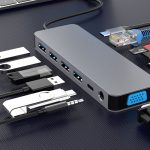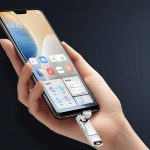NurPhoto/Getty Images; Amazon; Rachel Mendelson/Insider
- “Power Play” is a bestselling new book about Tesla’s rise in the past decade.
- Written by WSJ reporter Tim Higgins, it covers both Elon Musk’s successes and controversies.
- I found the book a fascinating read for people who love Elon Musk – and for his biggest critics.
Last year showed that irrespective of the world being on pause from a global pandemic, Big Tech companies will continue to flourish. And while Google, Apple, Facebook, and Amazon (popularly known as GAFA) have been posting record revenue and profit numbers, there’s one company that took the world by storm in the last couple of years: Tesla.
From being on the precipice of going bankrupt in 2018 (and many times before), Tesla has emerged as a behemoth in a matter of a few years. There hasn’t been a month last year when its CEO, Elon Musk, wasn’t in the news. In January this year, Tesla crossed a market value of $800 billion, which was higher than the market cap of the next five auto companies combined.
How could a younger-than 20-year-old automaker, which sells only electric cars, leave established names such as Volkswagen, Toyota, General Motors languishing in the dust?
That question prodded me to pick up “Power Play: Tesla, Elon Musk and the Bet of the Century” by Tim Higgins, a Wall Street Journal reporter who covered the auto beat for the paper and then moved to San Francisco to cover Silicon Valley.
Higgins’ unique understanding of the auto and tech industry is what makes the book eminently readable. (Don’t go by Elon Musk’s review of the book though – he calls it “false and boring.”)
Here are five things that stuck with me long after I had read the book and helped me understand the growth of Big Tech:
1. “First principles thinking” helped Tesla think outside the box and become a disruptor in the industry.
Justin Sullivan/Staff/Getty Images
Tesla is an electric car company that wanted to change the way things were done. Its CEO, Elon Musk constantly referred to ‘first principles thinking’ when addressing influential staff. It’s a way of problem-solving that drills a concept down to its most basic ideas before you work your way up. By design, it emphasizes curiosity.
Musk wouldn’t take established trends and facts from a traditional auto company as something to be applied to Tesla. Instead, he nudged his engineers to go back to the drawing board and figure out a way to approach problems differently. This workplace culture, along with Musk’s ability to attract excellent talent to Tesla, enabled the electric car maker to eventually have its own battery-making plant, eschew franchise agreements, and sell directly to customers, amid other firsts.
2. Many of Tesla’s victories came at employees’ expense, especially during the pandemic.
David Butow / Contributor / Getty Images
The price paid by those working at Tesla seemed to be ignored as long as the stock price and Tesla car sales were on the rise.
Tesla has made Roadster, Model S, Model 3, Model X and Model Y and each of their productions was the same story: Tesla running out of money followed by Musk managing to raise it. Workers were asked to forget downtime and work hard “this one time,” with many getting fired because Musk wanted to micro-manage. Higgins succinctly explained this trend: “Tesla was building the airplane as Musk was heading down the runway for a takeoff.”
Musk got away with many wrong-doings as Tesla’s stocks rose, fulfilling the stereotype of the world’s richest men refusing to acknowledge that their wealth is made on the backs of daily wage workers who are often exploited. Despite a raging pandemic, Musk went all out to ensure workers made themselves available on the factory floor – shelter at home regulations be damned.
3. Elon Musk’s Twitter behavior has been excused by many because of the company’s success – but there have also been consequences.
Drew Angerer / Staff / Getty Images
Elon Musk can elicit extreme responses. On one hand, he leads the most valuable auto company, but the road to getting there is strewn with mercurial behavior, fulfilling personal whims and fancies at employees’ wellbeing, delayed plans, pushing talented people to burnout, or worse, firing anyone who caught him on a bad day.
But what feels distinct to Musk is the fact that no other CEO has used Twitter this obsessively. He doesn’t just use it as a medium to rant against people he thinks “are out to ruin” Tesla, but also for calling people names, making repeatedly unsubstantiated claims, and even attacking journalists who point out the problems at Tesla. (Business Insider’s Linette Lopez faced a relentless tweet-storm from Musk over her scoop on Tesla, documented in the book.)
While Tesla is still lucrative, Musk’s behavior did face some deep financial consequences from time to time. When he called the British cave rescuer of the Thai children’s football team a pedophile, Tesla shares dropped 3.5% wiping out $2 billion off its valuation.
Another time, when Musk tweeted “Am considering taking Tesla private at $420. Funding secured,” share prices soared to record heights to the extent that NASDAQ had to halt trading for a while. The NASDAQ has to be informed about such maneuvers in advance, which Musk failed to do. As a result, Musk and Tesla were fined $20 million each as part of a fraud settlement with the Securities and Exchange Commission. It also led him to step down as chairman of Tesla’s board of directors for three years.
4. China is always an important block of the tech-economy puzzle.
STR / Contributor / Getty Images
In every tech company book that I’ve read over the last couple of years, there are two countries that always stand out: China and Saudi Arabia. While Saudi Arabia mostly features as a country willing to fuse capital when American technology companies need it most, China really provides a lot of these companies the escape velocity needed for growth beyond western markets.
Tesla got a taste of that in 2020 when its business in China accounted for 21% of its total sales. China is providing incentives to electric vehicle makers and is one of the top markets for EVs in sales numbers: Tesla’s Shanghai Gigafactory makes Chinese variants of the Model S and cars for the European market as well.
In the luxury EV space, it has little competition from Chinese carmakers who address the budget buyers. Just like with Apple, China will continue to be a huge market for Tesla in the near term.
5. Tesla’s risks from a decade ago have reshaped the automobile industry to start prioritizing electric vehicles.
Justin Sullivan / Staff / Getty Images
When Tesla had released its first Roadster in 2008, there wasn’t anything quite in its league: Electric cars were most often seen as a compromise. In a little over 10 years, the landscape has turned on its head. With debates around climate justice picking up pace and fossil fuels being looked down upon, every major carmaker – Ford, GM, Volkswagen, BMW, Toyota, Mercedes-Benz – has been forced to push its portfolio towards electric cars.
With Tesla, its founders and Elon Musk took a leap of faith in the early 2000s and followed through by plunging headfirst into a cut-throat automotive market. Looking at Tesla’s share prices, one gets hope that it will push many companies to strive towards introducing more green technologies.
The bottom line
In the last couple of years, Musk has dominated the technology news cycle for good – and bad – reasons.
Musk seems to have an equal number of admirers and haters – I think this book is meant for people in both those categories. It shows Elon Musk’s biggest fans the many ways their hero is deeply flawed, from his Twitter takedowns to how he treats members of his own staff.
And for those who ardently dislike Musk, this book covers the complicated truth of him taking bets that no incumbent auto company would ever dare to, ultimately reshaping the industry to produce greener cars.
In an age where a personality like Musk has a cult-like following, “Power Play” shows us that even certified innovators come with their fair shares of setbacks.
Other great books about Big Tech and Silicon Valley:
Powered by WPeMatico






